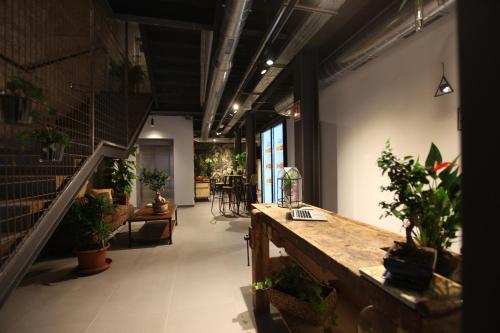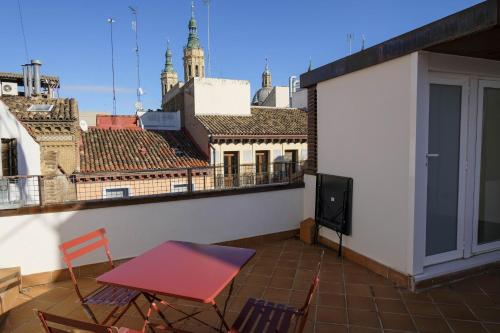The evolution of art in Zaragoza
An art historian would probably tell you that new styles don’t appear out of thin air, that each is an evolution of a previous movement or a response to external social influences.
It’s what I’m also thinking as Luis Garcia shows me around Zaragoza.
Luis is one of the organisers of a street art festival here in the Spanish city and he’s pointing out some recent murals that have been painted on the walls of large buildings.
He’s talking about modern history – how the art has transformed neighbourhoods in less than a decade. I’m thinking more in centuries.
My day here in Zaragoza has made me realise how important art has always been to the city… and how the city has had such an impact on art.
Zaragoza, Spain
I feel as if Zaragoza is one of those cities that gets a bit lost in the minds of tourists. It’s not that people have a negative perception of it… it’s more that they have no perception at all.
It is right at the crossroads of – and easily accessible from – Madrid, Barcelona, Valencia and Bilbao. What could be an advantage, I think becomes a disadvantage because travellers are spoiled for choice in the region and choose to spend their limited time at the more famous cities.
However, Zaragoza should not be overlooked. It is the fifth-largest city in Spain, the capital of the Aragon region, and has more than enough to offer tourists to deserve a place on their journey through the country.
As you’ll see, many of these sites fit together to tell an enthralling story that stretches for almost a thousand years.
Aljafería Palace
The oldest site I visited in Zaragoza is Aljafería Palace, the stronghold built in the 11th century by the Islamic rulers of the time. This was a pleasure palace and you get that sense as soon as you go into the main courtyard, with the lush garden and the cool patio with its beautiful archways.
By the 15th century, Aragon (and hence Zaragoza) was under the control of Catholic royalty and the palace was converted into something more appropriate for the period.
But, to wonderful effect, the restorations merely adapted what was already there, rather than starting again, and what was created was a fusion of styles of these two great religions.
This aesthetic trend is known as the ‘Mudéjar style’ and it can be found all across the region. In fact, there’s even a World Heritage Site that is made up of ten locations across Aragon that best represent the style. This is one of them.
Aljafería Palace is the first example in this tale of how a new art movement developed in Zaragoza but not in isolation, but as a blend of old and new.
Aljafería Palace is open daily at these times:
November to March: 10:00 – 14:00 and 16:30 – 18:30 (closed on Sunday afternoon)
April to October: 10:00 – 14:00 and 16:30 – 20:00
A standard ticket is €5. Concession is €1.
La Seo
While we’re on the topic, I want to also mention another site – the Cathedral of the Savior, more commonly known here as La Seo. It is one of the other locations that is included in the World Heritage Site of places in the Mudéjar style.
I didn’t get a chance to go inside but, luckily, you don’t need to go in to see the highlight. The best example of Mudéjar art is on the wall outside, with its geometric patterns of bricks and glazed tiles.
La Seo is a really good example of the concept of Mudéjar. In essence, it is a church constructed by Islamic builders. They followed the specifications given to them by the Christians but used the techniques that they knew best.
I would recommend making the effort to have a look at La Seo when you’re in Zaragoza.
La Seo is open at these times:
Monday to Saturday: 10:00 – 14:30 and 16:00 – 20:00
Sunday: 10:00 – 12:00 and 16:00 – 20:00
A standard ticket is €7 and a concession is €5.
Cathedral-Basilica of Our Lady of the Pillar
Just a few minutes walk from La Seo is the icon of the city, the Cathedral-Basilica of Our Lady of the Pillar. From the outside, it is an enormous building, stretching out across the large square in front of it.
When I go inside, it seems even bigger, the layout of chapels meaning you can almost never quite see from one end to the other.
As far as the legend goes, it’s said that St James built a chapel dedicated to the Virgin Mary on this site in 41 AD, which would make this the first church ever dedicated to her.
There is no evidence of this original chapel and there have been several different constructions on the site over the centuries. This current building was completed in 1686.
From an artistic point of view, what we can find here is another pivotal moment in the development of art in Zaragoza.
This time it’s not in the architecture, but in some of the frescoes painted on the vaults because they are painted by one of the city’s most famous sons – Francisco Goya.
The Cathedral-Basilica of Our Lady of the Pillar is open at these times:
Monday to Friday: 7:30 – 13:30 and 16:30 – 20:15
Saturday: 7:30 – 11:45 and 16:30 – 20:30
Sunday and religious holidays: 7:30 – 13:30 and 16:30 – 21:30
Admission to the basilica is free, but entry fees apply to the museum and tower.
Goya Museum
Francisco Goya spent his formative years in and around Zaragoza before he moved to Madrid to advance his career.
Although he is considered first and foremost to be a ‘Spanish’ artist, the locals here celebrate his connection to the city. The Goya Museum is a good example.
And within the museum, we find a collection of works that show how the city again influenced Goya’s art.
Throughout his career, you can trace a transition from rather staid court paintings and the religious iconography we see at the cathedral, through to political statements and depressive pieces.
There are several theories as to why there was such an extreme change in his moods and art, but one of the strongest arguments is that he was deeply affected by the Peninsula War between Spain and Napoleon’s forces at the start of the 19th century.
One of the strongest revolts – and one of the most dramatic losses of civilian life – was in Zaragoza, where he still had friends and family.
On display at the Goya Museum is an excellent collection of prints that he made representing the true awful cost of war.
The Goya Museum is open at these times:
Tuesday to Saturday: 10:00 to 14:00 and 16:00 – 20:00
Sundays and holidays: 10:00 – 14:00
24 and 31 December: 10:00 to 14:00
A standard ticket is €8 and a concession is €4.
Expo 2008
In more recent years, Zaragoza has made a concerted effort to support new art and architecture. There’s probably nowhere that better demonstrates this than the site of the International Expo in 2008, which was held as a way of getting international promotion for the city.
The space alongside the Ebro River had several new constructions for the expo that are still there, including the Water Tower and the beautiful Bridge Pavilion by Zaha Hadid.
Of the pavilions that were put up to host displays by international participants, some are still here and are now being used as offices. Other buildings are being used for cultural performances and conventions.
Walking around through the space, I like the feel of it. It’s modern and quite pretty, with the course of the river taken into account for the layout. I’m particularly impressed by a sculpture called Alma del Ebro (Soul of the River Ebro).
Again, the rejuvenation of the Expo 2008 site is an example of a new style of architecture that is uniquely-suited to Zaragoza. It is of the city and for the city, responding to a need and using what’s available.
Festival Asalto
And that brings me back to Luis Garcia, who is showing me some of the street art in Zaragoza.
The event that Luis co-founded is called Festival Asalto and each year it brings artists to the city to create murals and other pieces of art on walls of buildings in a particular neighbourhood.
The area for the event is normally chosen because the organisers have identified a place that would benefit from some colour and creativity.
Interestingly, it has worked. In some of the poorer areas and the neighbourhoods with more disenfranchised communities, new artworks on the buildings have increased a sense of pride and belonging.
It’s not just about the visual aesthetics. My feeling is that it’s also a connection to the city more broadly.
It’s a way of Zaragoza letting these people know that they matter and they are part of the larger community.
Street art is not new. It’s not only in Zaragoza. And, in fact, most of the artworks aren’t specifically relevant to the city. But it is having an effect here that changes the city and takes the development of art a little bit further in a new direction.
That’s what happened with the Mudéjar, it’s what Goya did, and it’s what we find at the expo site. And I’m sure it will happen again soon enough.
THE BEST ACCOMMODATION IN ZARAGOZA
Keeping with the artistic theme of the city, there are some very stylish hotels in the centre of Zaragoza.
BACKPACKER

As the name suggests, the Botanic Hostel has nature as its theme, making for a wonderful atmosphere in the city.
BUDGET

Although you’re in the suburbs, you’ll get excellent value at B&B HOTEL Zaragoza Los Enlaces Estación.
APARTMENT

Beautifully designed with spacious apartments, Silken Casa Platerias Siglo XV is within a few steps of the city centre.
LUXURY

Set in a grand historic building, NH Collection Gran Hotel de Zaragoza has an excellent selection of modern facilities.
Time Travel Turtle was supported by the Spanish Tourist Office in partnership with Zaragoza Tourism but the opinions, over-written descriptions and bad jokes are his own.
Wow! what a beautiful city to explore, this looks very nice and amazing for spending some classic time in grasping the beauty of these monuments.
Thank you very much for showing my city in such a beautiful way and with such respect.
I wish travellers in Spain come and visit and discover the many more places there are (lots of palaces all over the city).
Tip: Combining art with food reaches almost perfection in Zaragoza.
So many historical places to visit in Zaragosa. Who knew? If by chance your family wants to travel in Spain here is our top family attractions and things to do in Spain with kids!
Yeah – there’s lots to do in Zaragoza for adults and kids!
Great
In glacia?.